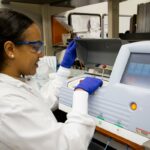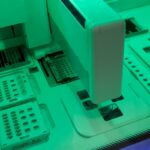Human DNA, the blueprint of life, is a fascinating topic that has intrigued scientists for decades. The complexity and intricacy of our genetic makeup have led to numerous breakthroughs in science and medicine. However, a question that often arises is: Can scientists change human DNA? This article delves into the depths of this question, exploring the realm of genome editing and its implications.
Understanding the Human Genome
The human genome is essentially the complete set of human genes. It’s like a manual that contains all the instructions needed to build and maintain a human being. DNA, or deoxyribonucleic acid, plays a pivotal role in the human genome. It’s the molecule that carries these instructions, encoding them in a complex language of nucleotide sequences.
The Evolution of Genome Editing Technologies
Genome editing, the science of altering the DNA of living organisms, has evolved significantly over the years. The emergence of this field was marked by the development of key technologies such as CRISPR-Cas9, a revolutionary tool that allows scientists to edit genes with unprecedented precision and ease.
Types of Human Genome Editing
Human genome editing can be broadly classified into three types: somatic cell genome editing, germline cell genome editing for non-reproductive purposes, and germline cell genome editing for reproductive purposes.
Somatic Cell Genome Editing
Somatic cells are the body’s non-reproductive cells. Editing the DNA of these cells affects only the individual and not their offspring. This type of genome editing has been used in various medical treatments, offering hope for curing genetic diseases.
Germline Cell Genome Editing (Non-reproductive)
Germline cells are the body’s reproductive cells. Editing these cells can potentially affect future generations. However, when germline editing is done for non-reproductive purposes, the changes do not get passed on to offspring.
Germline Cell Genome Editing (Reproductive)
This is perhaps the most controversial type of genome editing. Here, changes made to the DNA of germline cells are intended to be passed on to future generations. This opens up the possibility of eliminating genetic diseases from a family line, but also raises significant ethical concerns.
Somatic Human Genome Editing: A Closer Look
Somatic cells form the majority of the cells in our body. They include cells from organs, muscles, skin, and more. By editing the DNA of these cells, scientists can potentially cure diseases caused by genetic mutations. For instance, genome editing technologies have been used in experimental treatments for HIV and sickle-cell disease, showing promising results.
Germline Human Genome Editing: An In-depth Analysis
Germline cells, or reproductive cells, carry the genes that will be passed on to the next generation. Editing these cells can have far-reaching implications. Non-reproductive germline editing, such as in research settings, can provide valuable insights into human biology and disease. However, reproductive germline editing, which aims to pass changes on to future generations, is a topic of intense debate due to its ethical implications.
The Ethical Implications of Genome Editing
The power to change human DNA is not without its controversies. The debate surrounding genome editing is multifaceted, encompassing scientific, ethical, and societal considerations. While somatic genome editing is generally accepted for its potential to cure diseases, germline genome editing, especially for reproductive purposes, raises concerns about unforeseen consequences, genetic equity, and the potential for misuse.
The Future of Genome Editing
Despite the ethical debates, the potential applications of genome editing are vast. From curing genetic diseases to improving crop yields, the possibilities seem endless. However, there are still many challenges and limitations to overcome, including technical hurdles, regulatory issues, and the need for public engagement and consensus.
Key Takeaways
The ability to change human DNA, once the stuff of science fiction, is now a reality thanks to advances in genome editing technologies. While the potential benefits are immense, the ethical implications cannot be ignored. As we move forward, it’s crucial to navigate this new frontier with caution, ensuring that the science serves humanity and not the other way around.
Frequently Asked Questions
What is human genome editing?
Genome editing is the process of making precise changes to the DNA of living cells. In the context of human genome editing, this can involve changing the DNA of somatic (non-reproductive) cells or germline (reproductive) cells.
What is the difference between somatic and germline genome editing?
Somatic genome editing involves changing the DNA of non-reproductive cells, which means the changes do not get passed on to offspring. Germline genome editing involves changing the DNA of reproductive cells, which means the changes can potentially be passed on to future generations.
What are the potential benefits of genome editing?
Genome editing has the potential to cure genetic diseases, improve crop yields, and even help combat climate change by creating more resilient plants and animals. However, these benefits must be weighed against the potential risks and ethical considerations.
What are the ethical concerns associated with genome editing?
Ethical concerns associated with genome editing include the potential for unforeseen consequences, issues of genetic equity (i.e., the risk of creating a “genetic underclass”), and the potential for misuse (e.g., creating “designer babies”).
What is CRISPR-Cas9?
CRISPR-Cas9 is a revolutionary tool that allows scientists to edit genes with unprecedented precision and ease. It works by using a molecule that can “guide” the Cas9 enzyme to a specific location in the genome, where it can then make a cut in the DNA.
What is the future of genome editing?
The future of genome editing is both exciting and uncertain. While the potential applications are vast, there are still many challenges and limitations to overcome. As we move forward, it’s crucial to navigate this new frontier with caution, ensuring that the science serves humanity and not the other way around.








